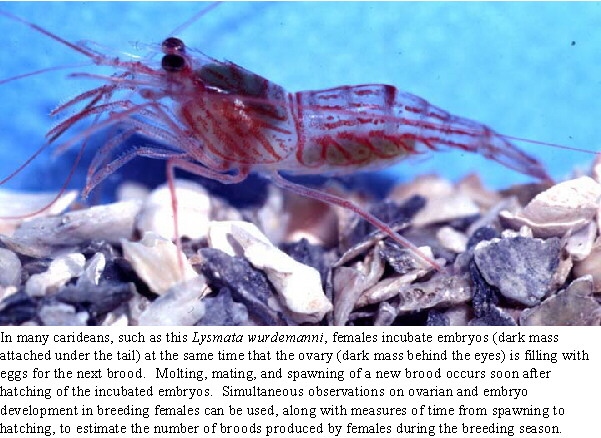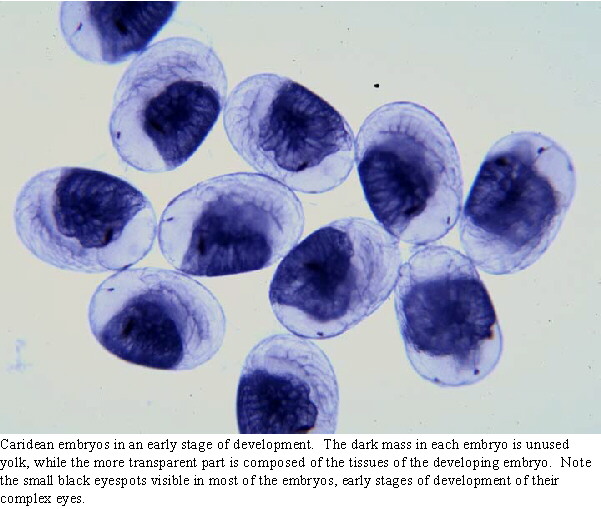

Similarly, a comparison among species of the penaeoid shrimp genus Sicyonia shows that tropical species breed continuously, subtropical species have a lengthy but seasonal breeding season, and a cool temperate species showed breeding confined to even a more restricted period during the year (see Bauer, 1992a). The subtropical Gulf of Mexico penaeids Rimapenaeus similis and R. constrictus show somewhat extended but still seasonal breeding patterns (Bauer and Lin, 1994).
The studies cited above are based on samples of shrimps collected throughout the year. Measurements are taken on their breeding characteristics, especially those of females (degree of ovarian development and, in caridean shrimps, presence and degree of development of attached embryos).


I have tried to relate breeding patterns to factors of
the environment which may have caused them to evolve (selective pressures).
These include the seasonality of production of larval food supplies and
the intensity of predation pressure in the environment. Although it is
sometimes hard work to describe the patterns of breeding, the observations
needed to test hypotheses about factors explaining these patterns is even
more difficult. Lots of work for an interested marine biologist to do! Look also for the very good work on this theme by a group of Brazilian investigators working in southeaster Brazil (Adilson Fransozo, Maria Lucia Fransozo, Antonio Castillo (UNESP Botucatu), Rogerio Costa UNESP Bauru), Fernando Mantelatto (USP, Ribeiro Preto) and their students.
Back to Home Page